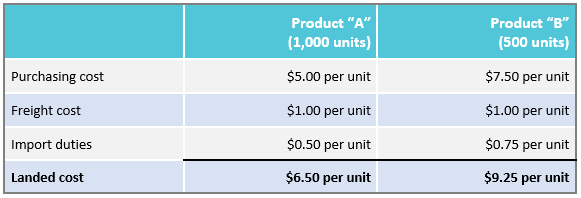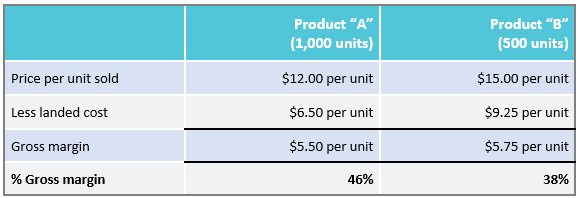 Many wholesale and distribution businesses consider using one or a handful of basic importing software solutions to meet their operational needs. But if the software isn’t tailored to your business and can’t help you make better decisions, it’s essentially just a glorified spreadsheet.
Many wholesale and distribution businesses consider using one or a handful of basic importing software solutions to meet their operational needs. But if the software isn’t tailored to your business and can’t help you make better decisions, it’s essentially just a glorified spreadsheet.
There are plenty of specific importing software solutions built for the wholesale and distribution industry. With a little work, these solutions can help you automate your operations and gain more visibility into the corners of your business where you may be lacking answers.
What is import/export software?
Most distribution and wholesale companies, whether they import products or only operate domestically, can benefit from software solutions.
But companies that import and export products also need a software solution that can help them manage and improve their global trade operations. These companies need a software solution with a special focus on relieving some of the complexities and stress that come with running an import/export business.
History of import/export software
The history of using software to better handle imports and exports dates back to the emergence of ERP software (Enterprise Resource Planning). ERP has its roots in inventory management in the manufacturing sector, when software was created to aid in monitoring inventory levels and report on manufacturing status.
Logistics—or the ability to coordinate, calculate and maintain shipments, shippers and vehicles—has always been a part of ERP software. These processes eventually turned into material resource planning, or MRP.
Some of the most common MRP software features enable manufacturers to manage, coordinate and account for all steps of the production process, which typically include scheduling, planning and forecasting.
You can only create a lucrative import/export business by executing and materializing your manufacturing plans. Taking advantage of the right software features can help your business take the extra step over the competition.
Top benefits of import/export software for wholesale and distribution companies
Import and export software can help you determine the cost and profitability of your products, maintain a consistent pricing strategy and gain better visibility into your inventory.  But how? Let’s take a look at some of the main features of importing software and how they can benefit you.
But how? Let’s take a look at some of the main features of importing software and how they can benefit you.
1. Track landed cost of imported goods
Landed cost tracking provides visibility of imported goods through shipment tracking. It helps you track all associated costs involved in shipping the imported goods to your final destination.
There are often hidden costs involved in making certain goods available for sale. Your true cost will always be higher than the cost you pay to the vendor for the product. In addition to the price of the goods, you’ll have to handle freight, customs and duty costs.
Landed costs are important to track because they’ll help you calculate your profit margins on international transactions.
Eliminating these hidden costs from the final product price can also help you attract customers. Paypal states that 24 percent of consumers say having to pay customs duties/fees and/or taxes is their biggest barrier to cross-border shopping.
Benefits of landed cost accounting
- Identify otherwise hidden cost elements of imported goods
- Calculate cost estimates by product based on volume, quantity and value
- Track shipment arrival dates
How importing software can help you calculate import duties during the U.S.-China trade war
A prime benefit of landed cost tracking is identifying the cost elements of imported goods. So can import/export software also help importers calculate import duties on their products with the ongoing U.S.-China trade war?
The current trade war a very relevant issue to be worrying about as I write this. Some manufacturers have already pulled certain models of their products from specific markets due to rising import tariffs. 
As tariffs affect more and more products, companies will now be dealing with a 10 percent tariffs on an estimated $200 billion in Chinese imports. In fact, a 10-25 percent rate will become the new norm for the foreseeable future. Importers will need a way to plan accordingly.
An import duty is a tax collected on imports and some exports by a country's customs authorities. It’s usually based on the imported good's value. Depending on the context, import duties may also be referred to as customs duties, tariffs, import taxes or import tariffs.
Import duties, freight and insurance are all direct costs that we need to factor into the landed cost equation. Luckily, a smart enough import/export software will include this as a feature of its landing cost accounting functionality.
To find the accurate gross margin, you need to attribute both freight costs and duty costs between products. Once determined, you’ll have your total landed cost. Consider the following example from Brightpearl:
1. You purchase two products from the same supplier. Product “A” costs $5/unit and product “B” costs $7.50/unit. Your company then sells these products for $12 and $15, respectively.Note: If you just use these numbers without analyzing your landed cost, you end up with a much crude estimate of gross margin on product A of 58 percent (cost of $5 divided by $12 selling price) and 50 percent on product B (cost of $7.50 divided by $15).
2. Decide how to attribute the freight and duty costs between two products. In this scenario, freight cost will be based on quantity and duty cost on value.
3. You order 1,000 units of product A, and 500 units of product B in the same container for a freight cost of $1,500 and an import duty cost of $875.
4. Based on quantity, all units will have a freight cost of $1/unit (1,500 units / $1,500).
5. Based on value, we’ll say product A will be assigned a duty cost of $500 ($0.50/unit) and Product B will be assigned a duty cost of $375 ($0.75/unit).
6. The landed cost of product A is now the original cost of $5/unit plus the freight and duty cost ($1 + $.50/unit) equally a total of $6.50/unit.
 7. You can now divide the difference between the new landed cost and the selling price by the selling price for each product to get your more accurate gross margin.
7. You can now divide the difference between the new landed cost and the selling price by the selling price for each product to get your more accurate gross margin. Using landed costs can help you calculate more accurate gross margin figures. These figures will give you much clearer insight into the costs of products, empowering you to make more informed decisions about your stock and sales.
Using landed costs can help you calculate more accurate gross margin figures. These figures will give you much clearer insight into the costs of products, empowering you to make more informed decisions about your stock and sales.
2. Ease vendor and customer payments with multi-currency support
Multi-currency support is an accounting method that allows for the input of two or more currencies. An example would be handling your accounting in both USD (U.S. dollars) and CNY (Chinese Yuan). Not only does multi-currency support make your accounting easier, but it also allows your international customers to pay in their preferred currency.
Having importing software with multi-currency support is vital. It’s much more than just simply calculating conversion rates. The cost of doing business in a specific country will vary depending on the product you're importing and the time of year.
Multi-currency support will handle these conversions for you and l help you create a better business plan based on the information it provides.
Foreign currency conversion applications allow you to keep your ledgers in the relevant local currency or even access the same financial information in the currency of your choice.
Additionally, with the right package, you can generate purchase orders and invoices in the right currency for your vendors and customers and maintain a price list for each currency.
Benefits of multi-currency support
- Ensure customer loyalty by improving customer experience
- Avoid extra charges related to currency conversion rates
- Maintain consistent pricing across all locations
3. Control inventory with warehouse management software solutions
Warehouse management is the process of managing inventory on an increased scale across multiple locations. At its core, import/export software will help you pick, pack and ship orders. A complete warehouse management software functionality will include capabilities such as inventory control, order fulfillment and purchasing.
Warehouse management software can typically integrate with whatever existing order and operating process your business already has in place. A warehouse management module helps you see where an order is in the shipping process, gives crucial insight as to how fast orders are completed and helps identify potential weak points in your warehouse processes.
Technology also continues to improve in warehousing, as barcoding and RFID technology allow importers to view inventory in real-time. The best warehouse management software providers are already implementing such emerging technology into their solutions.
Benefits of warehouse management software
- Increase the accuracy of order fulfillment
- Shorten delivery times
- Reduce overflow of on-hand inventory
- Increase the visibility of an order’s status
- Optimize storage space
- Minimize inventory movement
How to pick the right importing software for your wholesale/distribution business
Companies in the market for importing software will need to first know themselves before they know what type of software to pursue. With all the available options on the market, you’ll want to save time searching online by making sure you know what to look for.
The best type of importing software for you will differ depending on your industry. Some software will be geared towards “distributors”, but what kind of distributors? Does the software option have a narrow focus, or does it appeal as a broad “one size fits all” distribution software?
The next question you’d want to ask yourself is, can I get away with having a generic software? Or does the work you do require very specific and niche requirements? Can a software that works for your friend’s food distribution company work just as well for your electronics distribution company?
The answer isn’t always clear. Many solutions thrive at providing features for multiple sub-industries, while others focus specifically on just one or a few.
Examples of popular import/export software products
While there are plenty of capable solutions that have the features and capabilities discussed above, here are a few of the market leaders that have proven to provide most of the benefits already mentioned.
Acctivate: This software is a QuickBooks Inventory Management software option geared towards distributors and online retailers. Among their available features is the capability to perform as an import/export software. Importers familiar with QuickBooks might find Acctivate to be an affordable and easy-to-implement option.
Blue Link: This software is a complete accounting and inventory ERP for distributors. It offers an all-in-one experience to handle things such as ecommerce, barcode scanning, reporting, analytics and of course the import/export software features, such as landed cost tracking. They specifically target food and beverage, apparel, consumer goods, industrial products and electronics industries. Most of Blue Link’s customers are medium-sized enterprises with five to 150 employees.
Conclusion
No matter what your needs are or what industry you’re in, an importing software solution exists out there to help you achieve your goals faster and, hopefully, make your business more profitable than before.
The features mentioned above are only some of the many great reasons to look further into why an import/export software might be a good fit for your growing business.
How do you use import export software to streamline your importing operations? Share your experiences in the comment section below!







